Abstract
In recent years, there have been major advances in knowledge of Vibrio species and related organisms that are responsible for diarrhoeal diseases, particularly V. cholerae O-Group 1 (epidemic strains), atypical V. cholerae O-Group 1, non-O-Group 1 V. cholerae (non-epidemic strains), V. parahaemolyticus, V. alginolyticus, and ”Group F vibrios”. This article reviews the important new information, and identifies gaps in our knowledge, on aspects such as the epidemiology and bacteriology of vibrios, environmental surveillance for V. cholerae O-Group 1, phage and vibriocin typing of V. cholerae, and cholera enterotoxin, and its relevance to pathogenesis, immunity, and vaccine development. In each of these areas priorities for further research are recommended.
Full text
PDF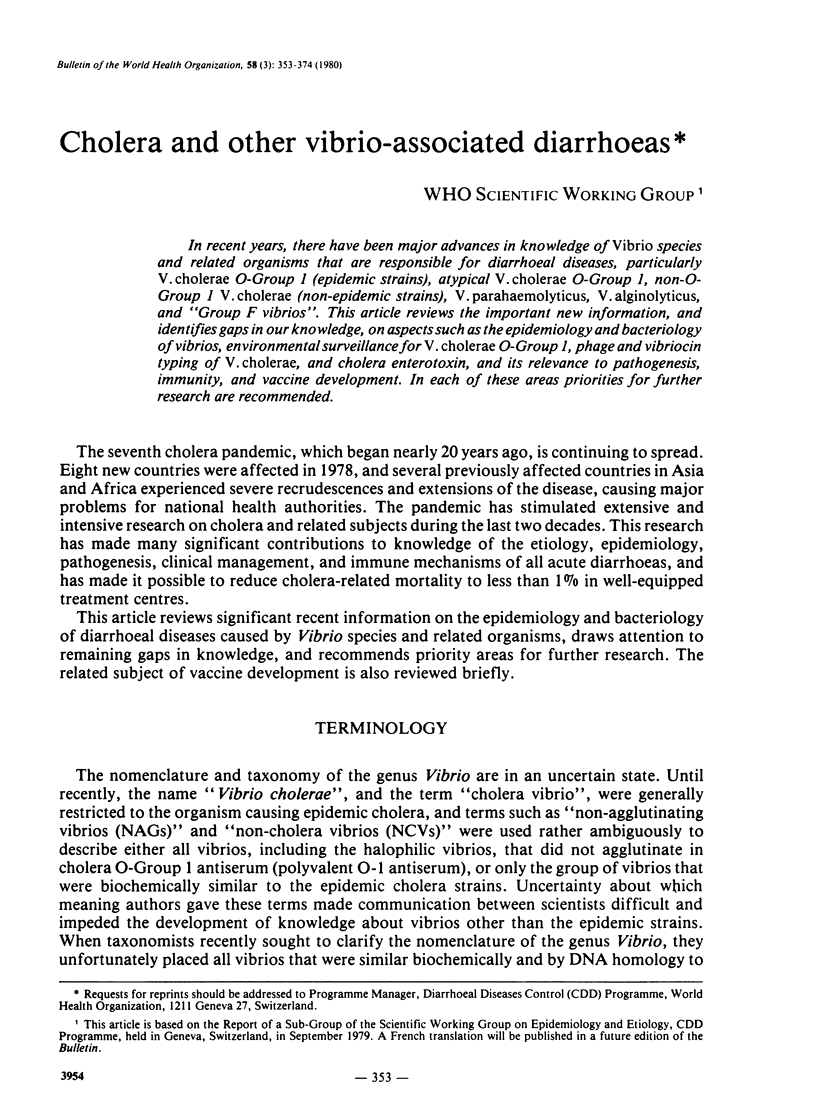
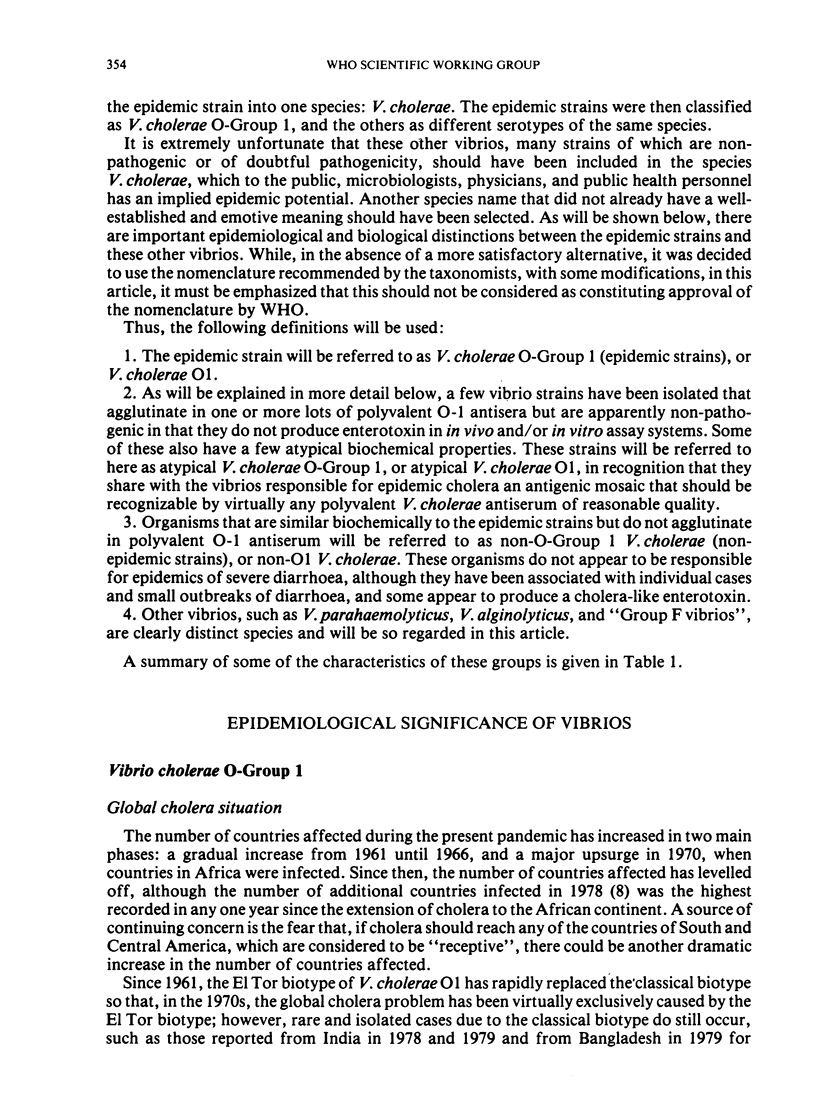
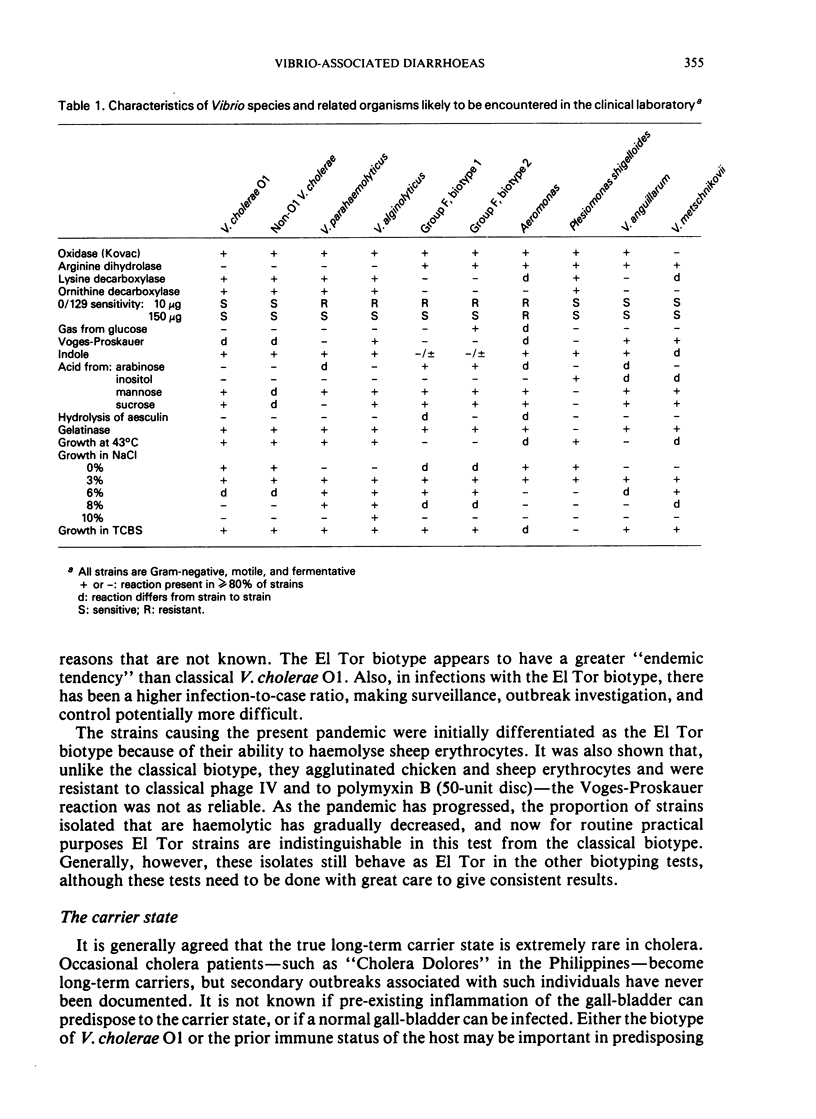
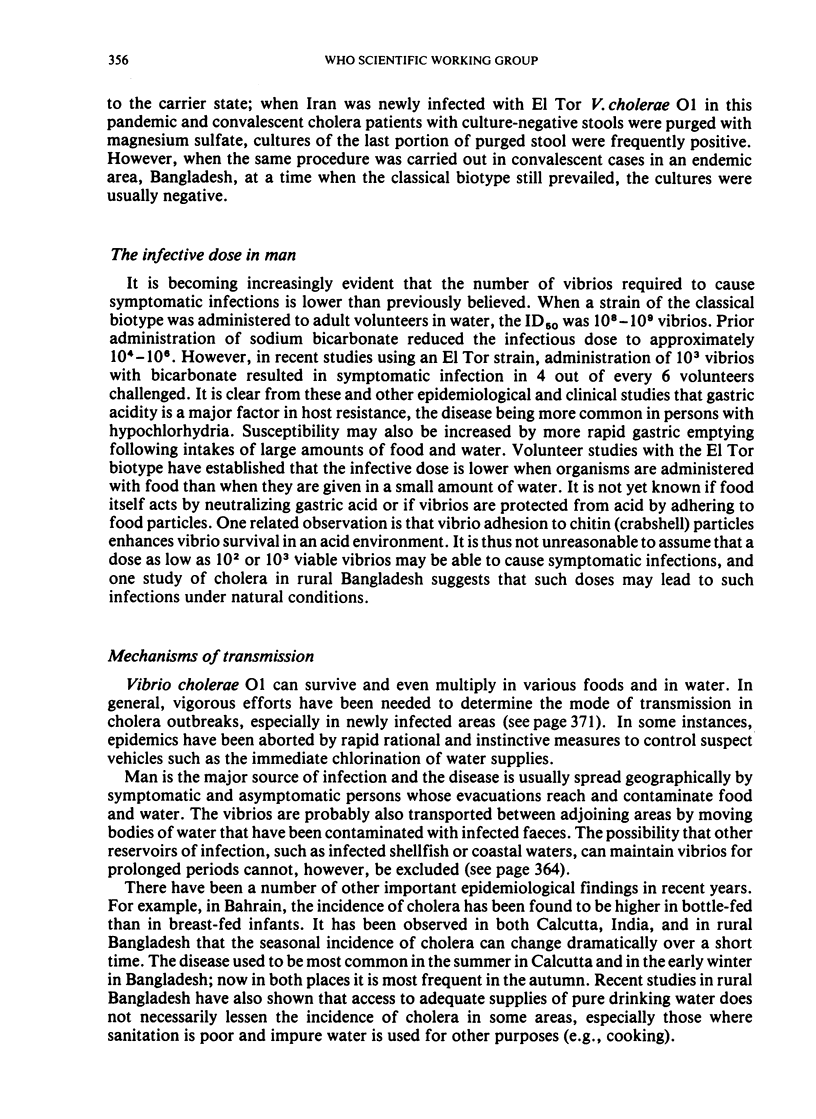
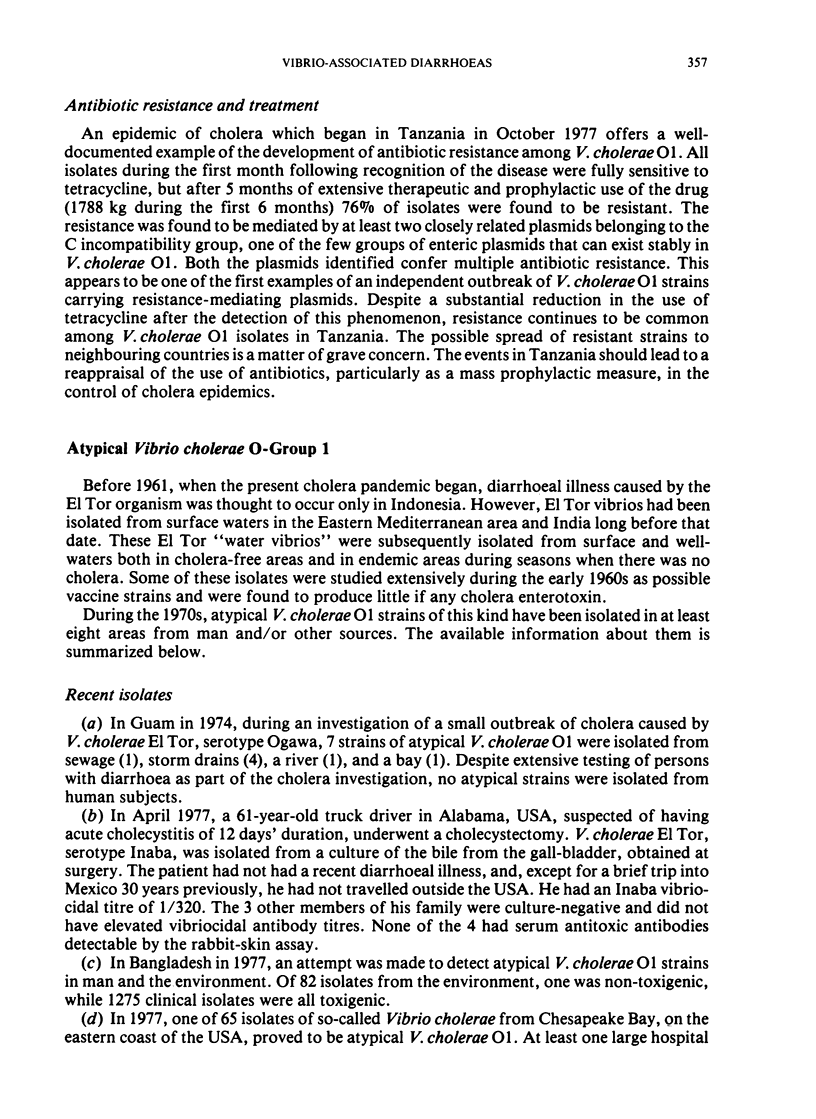
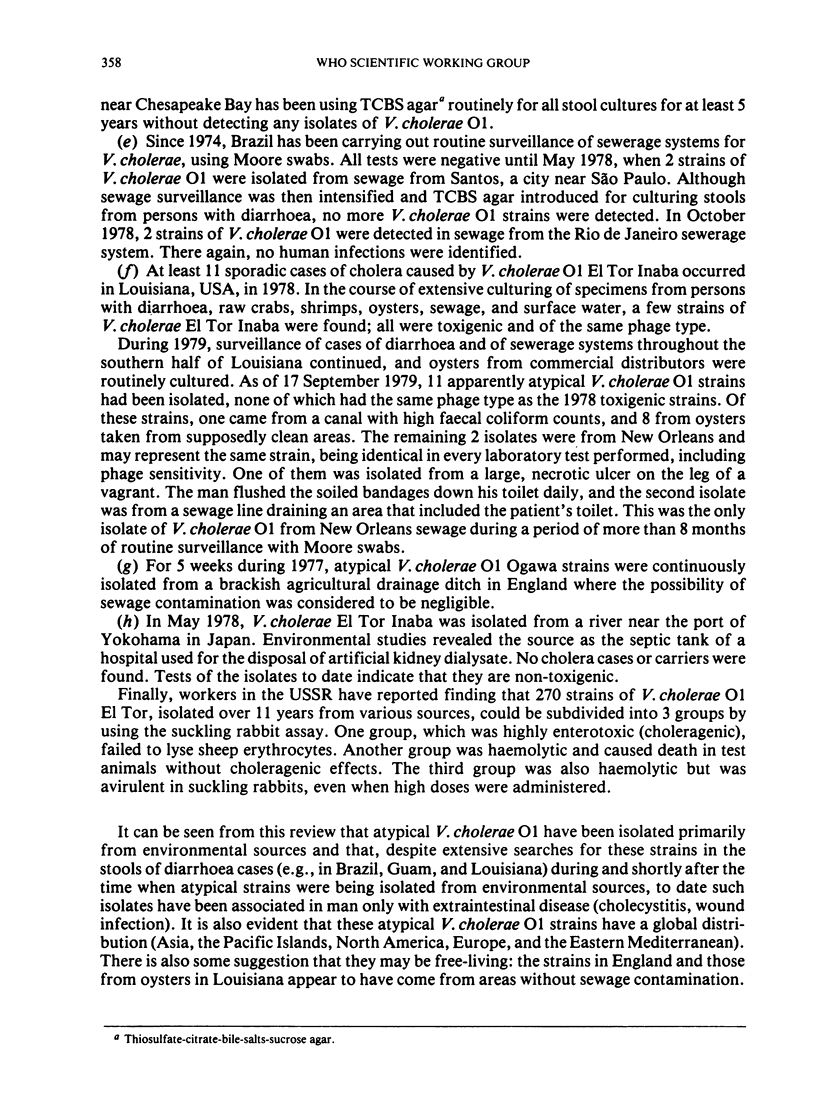
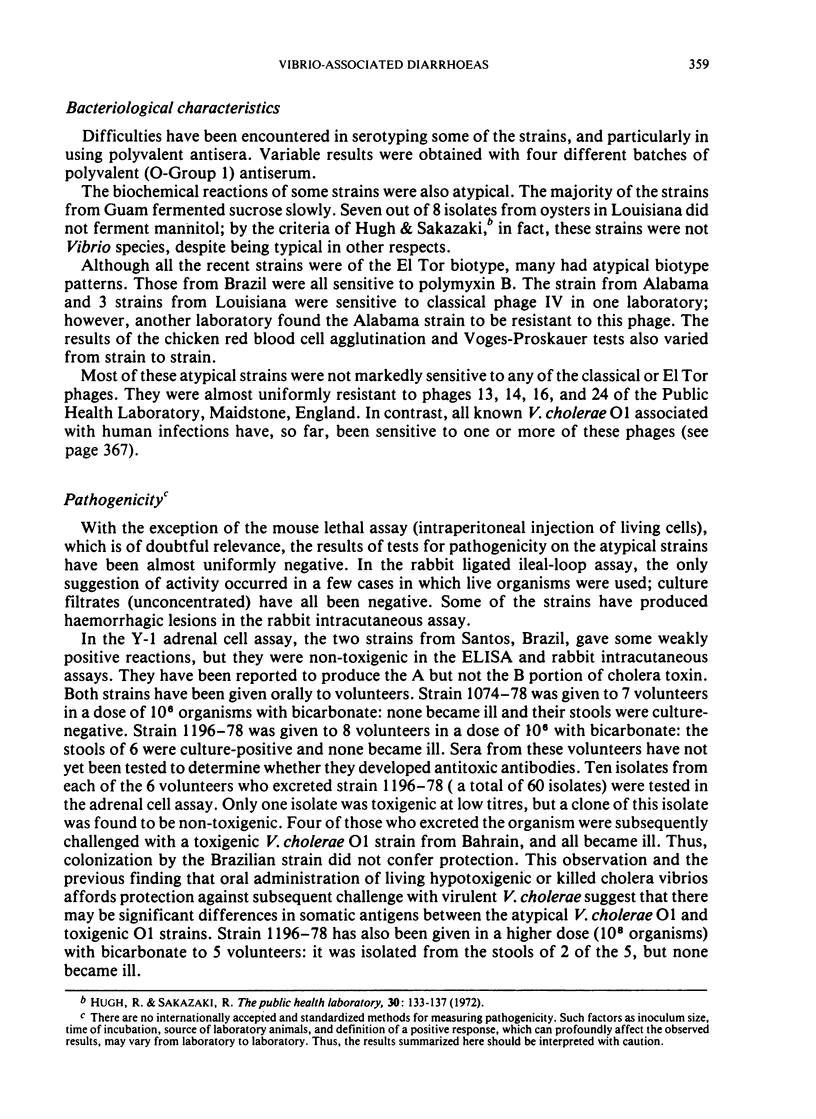
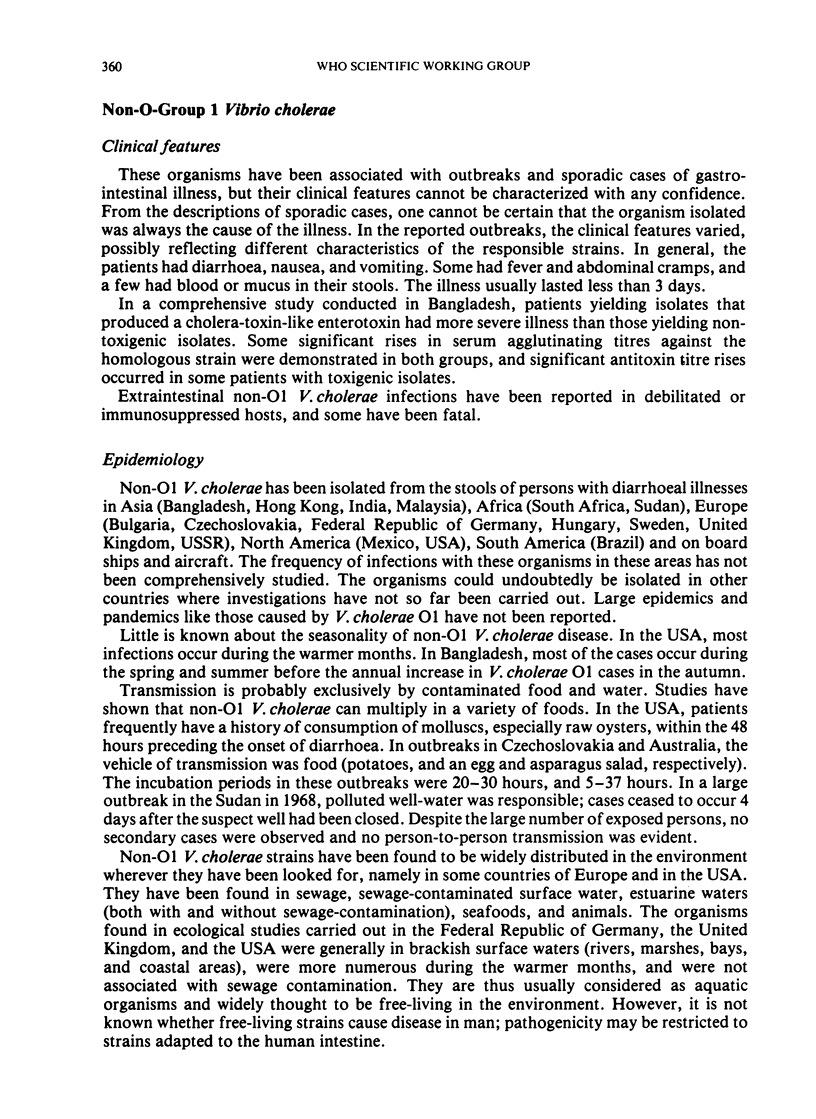
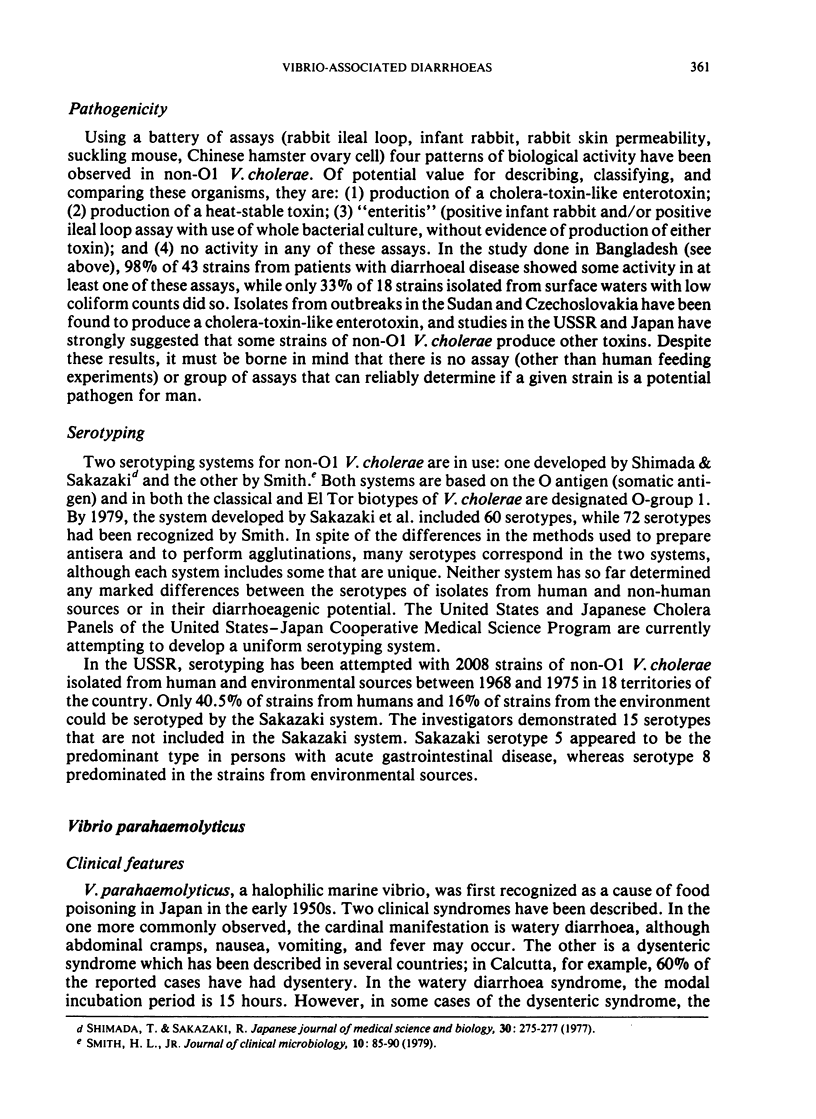

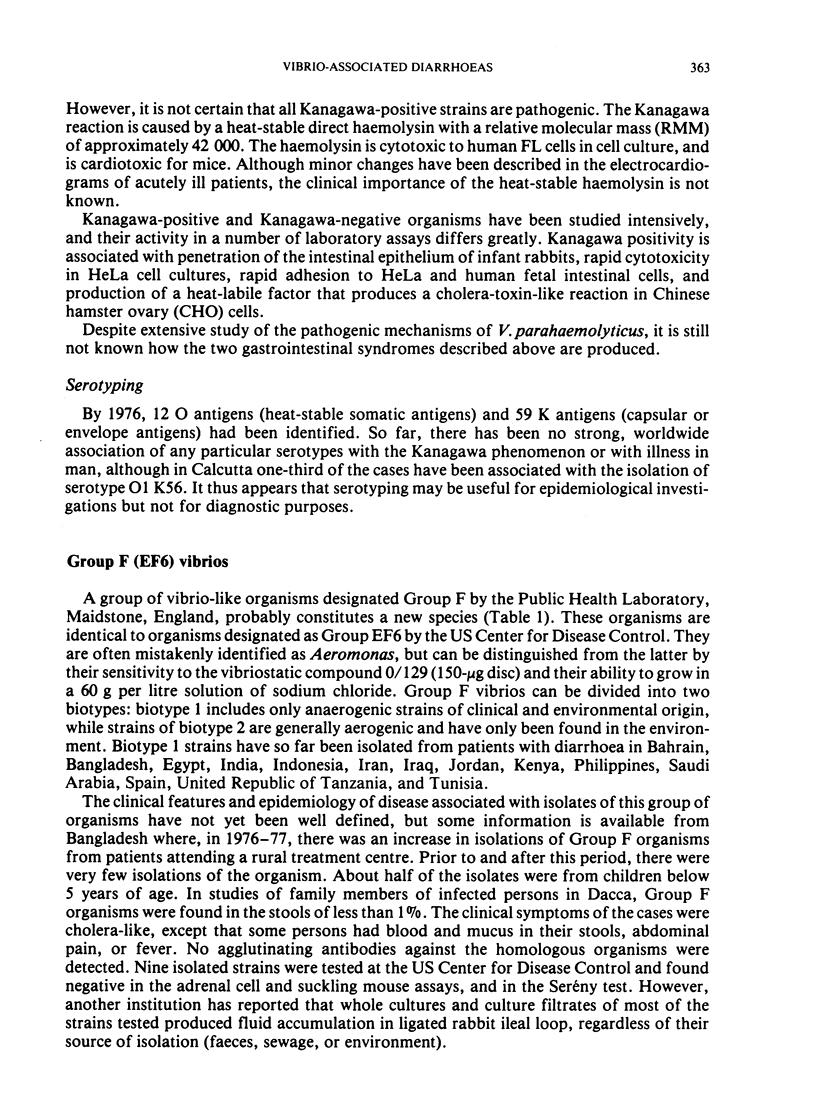

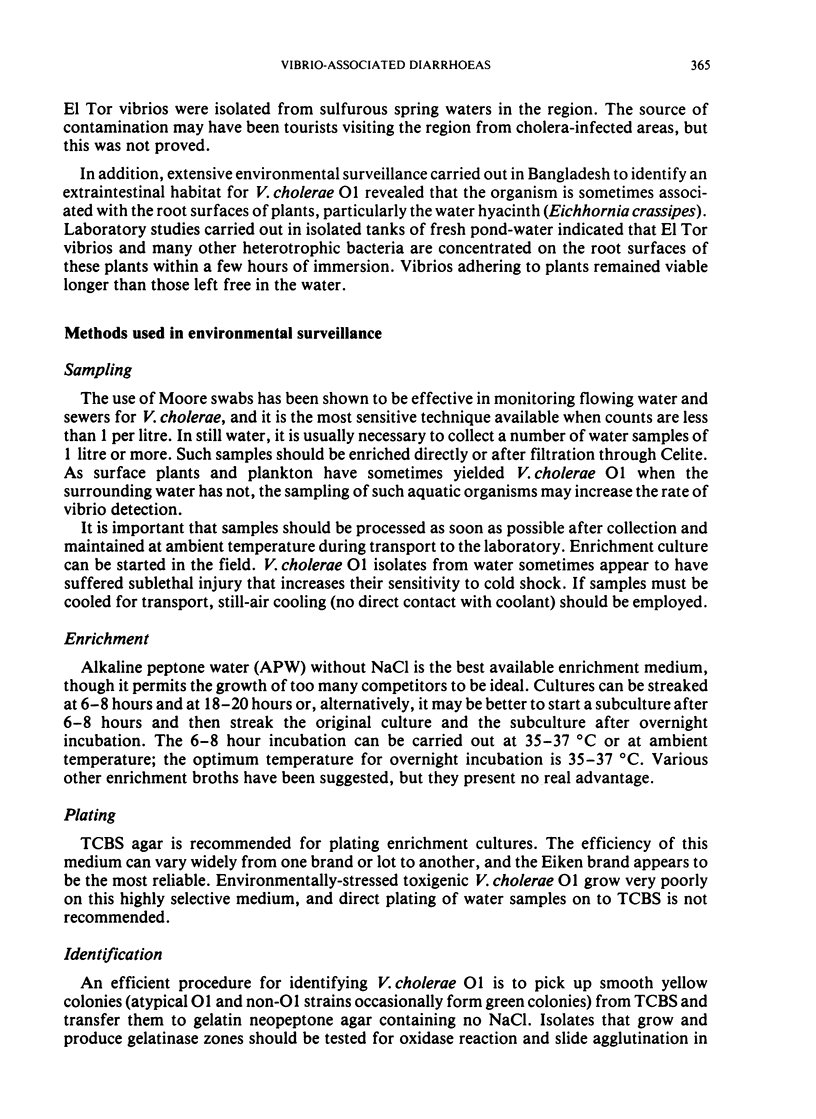
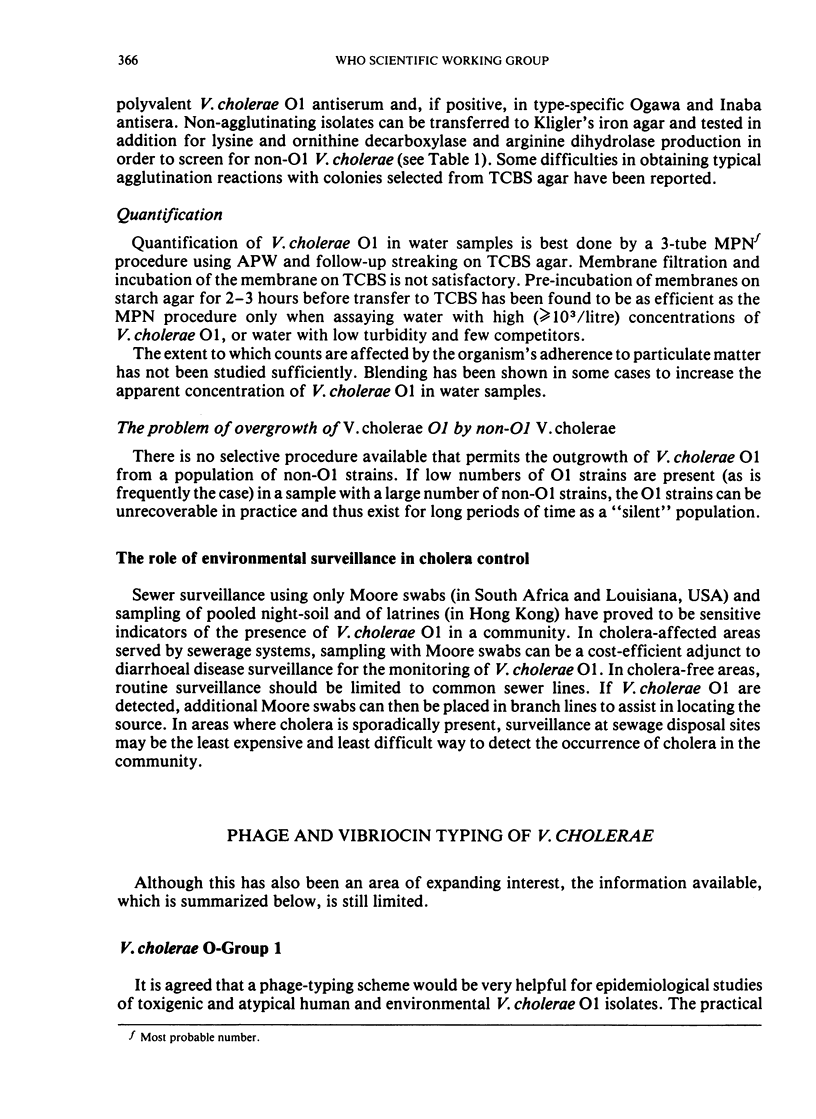
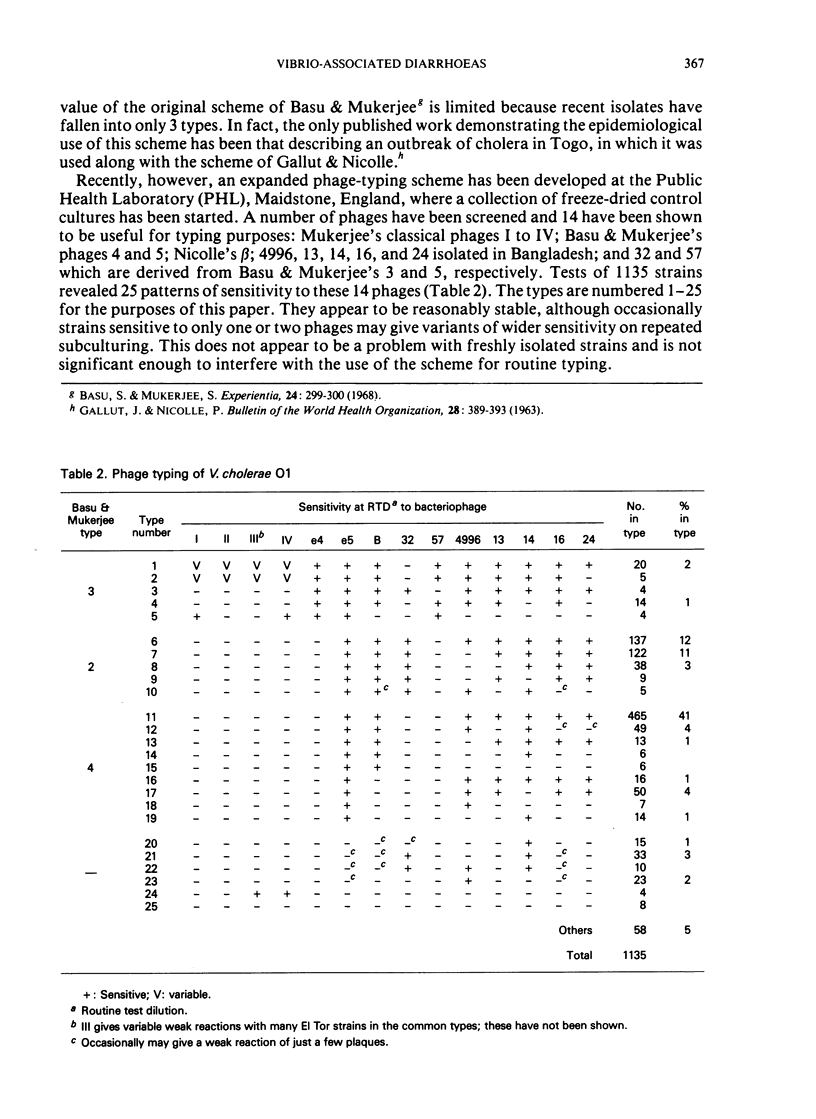

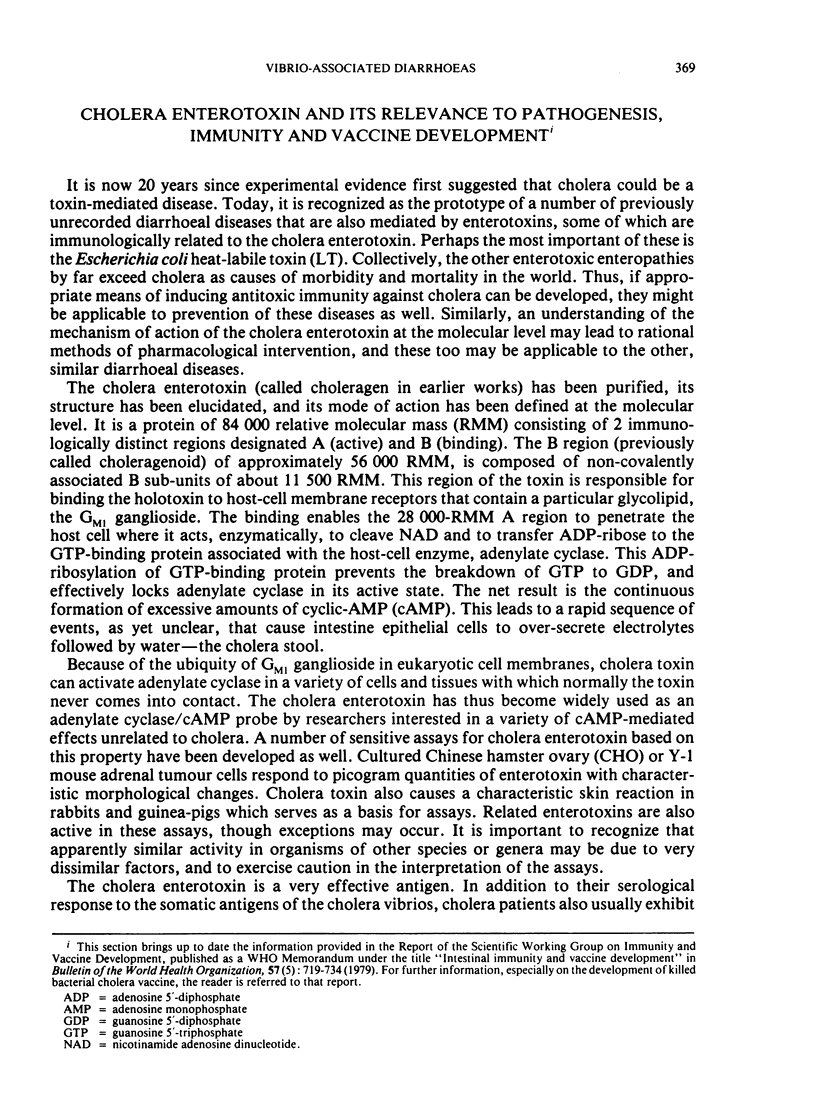
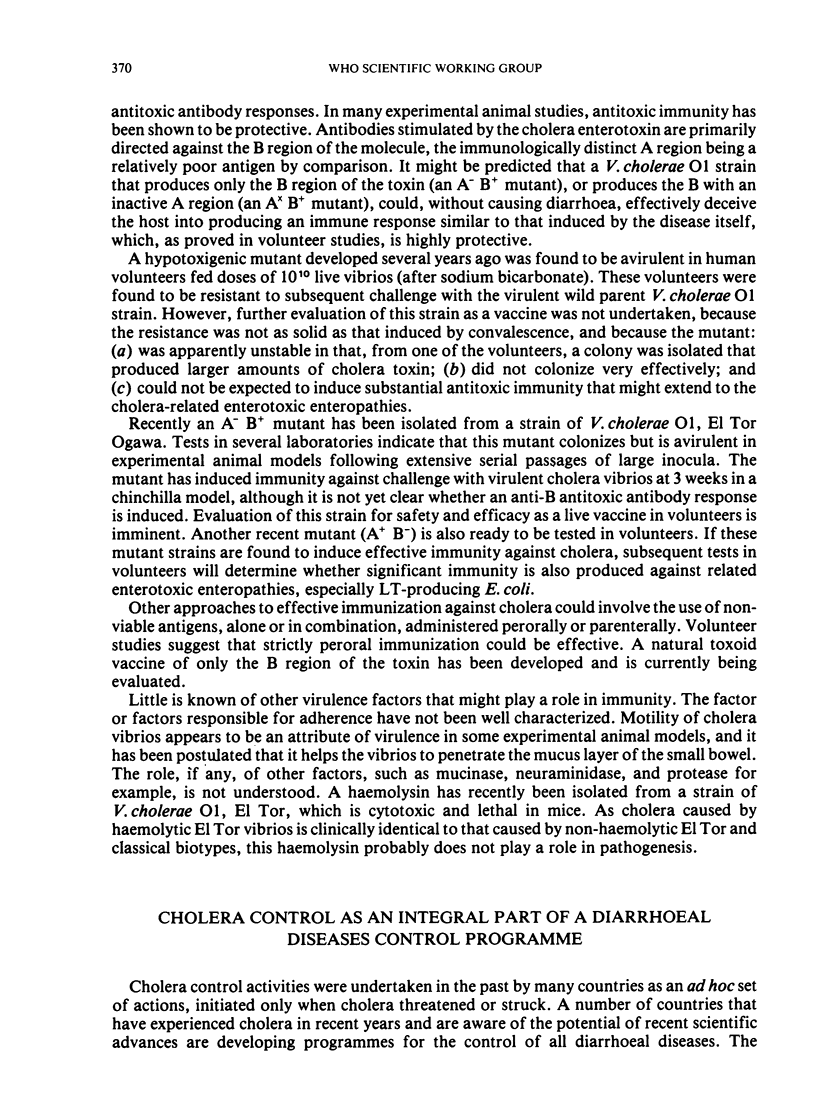
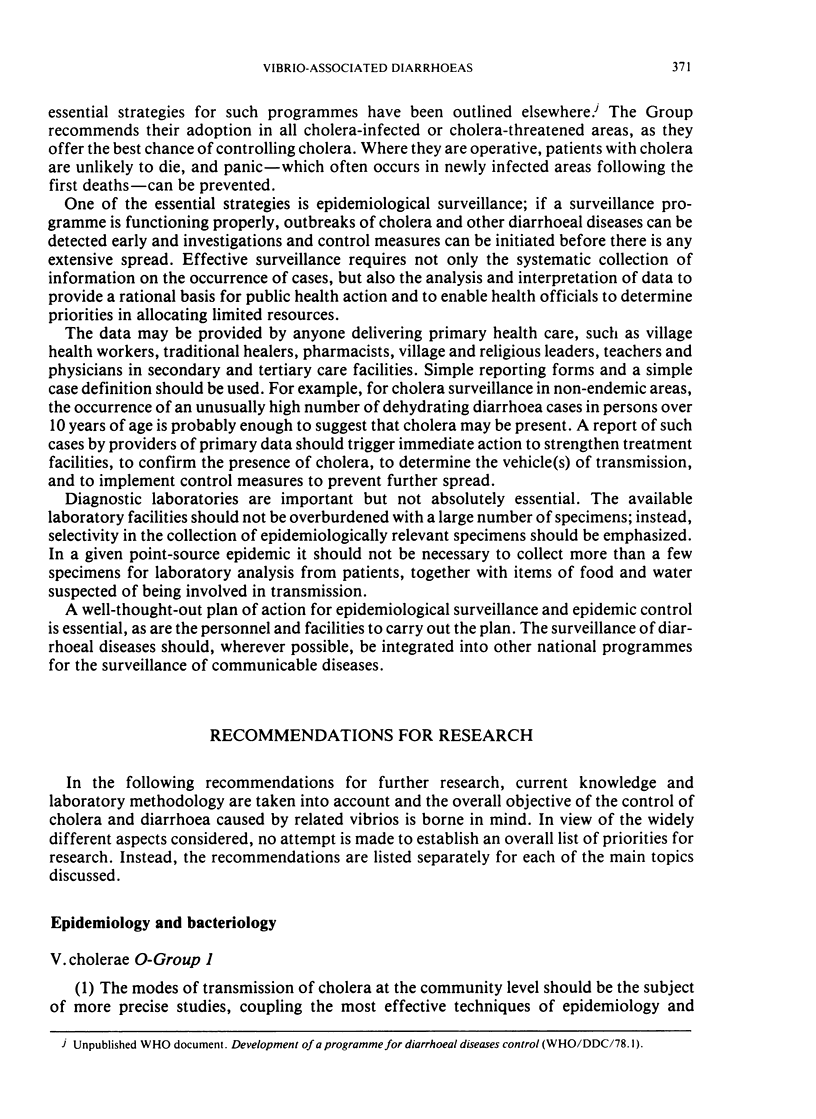
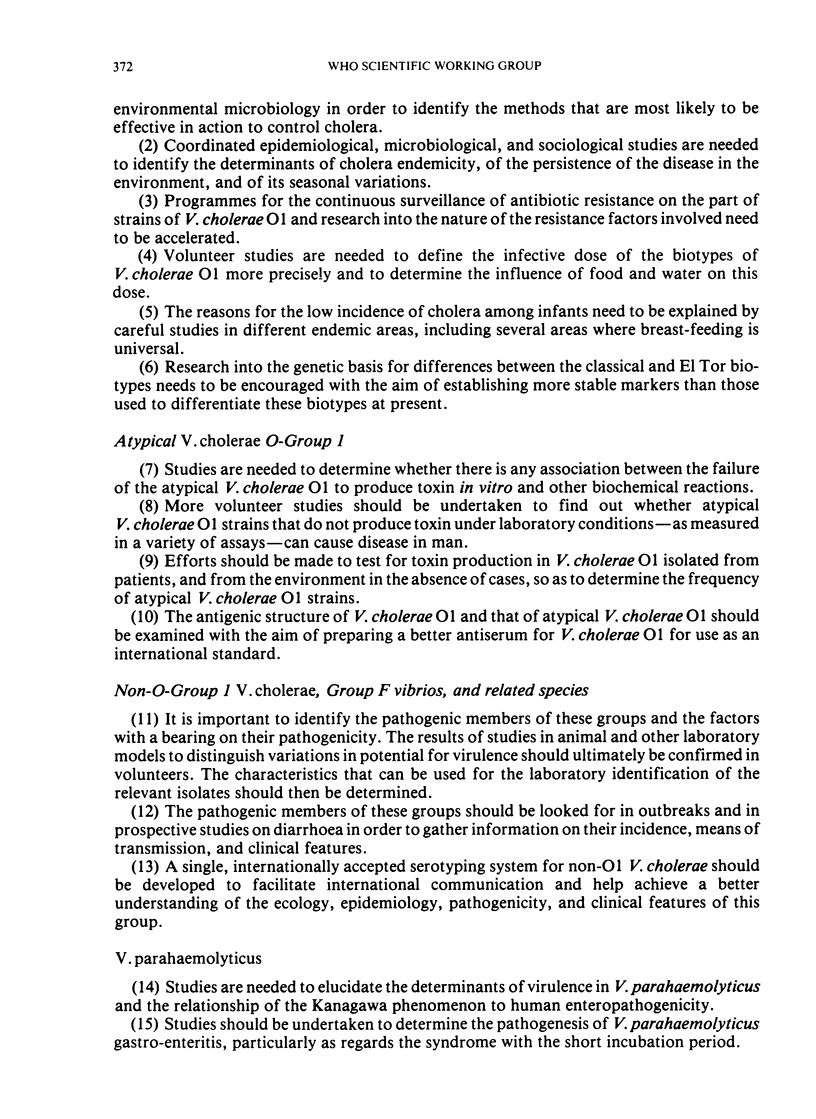
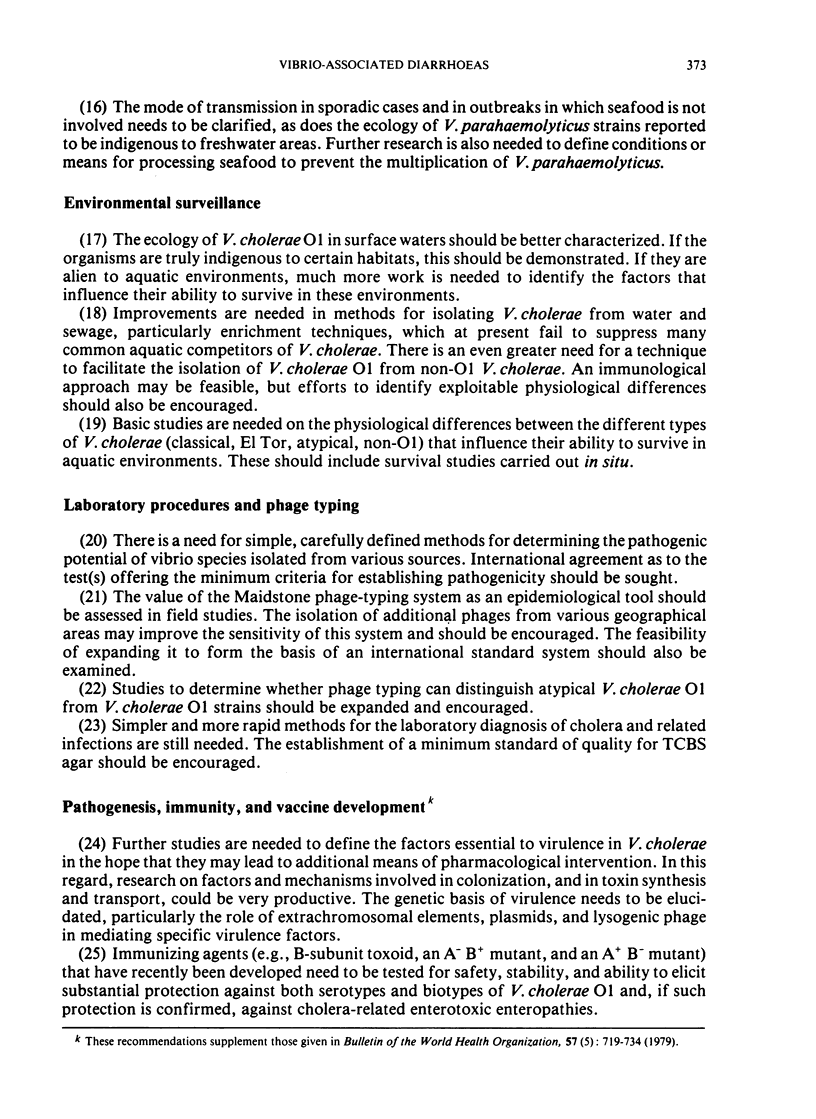
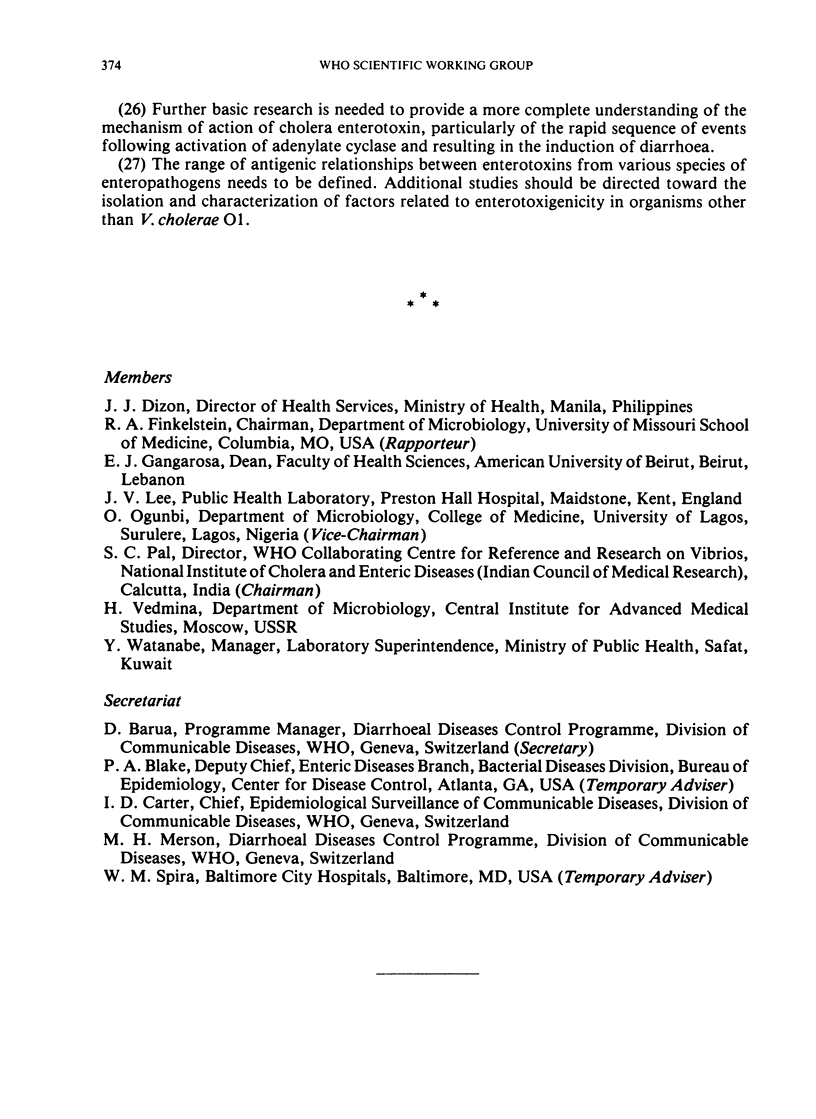
Selected References
These references are in PubMed. This may not be the complete list of references from this article.
- Basu S., Mukerjee S. Bacteriophage typing of Vibrio eltor. Experientia. 1968 Mar 15;24(3):299–300. doi: 10.1007/BF02152832. [DOI] [PubMed] [Google Scholar]
- GALLUT J., NICOLLE P. [Lysogeny and lysotyping of V. cholera and V. el tor of various geographic origins]. Bull World Health Organ. 1963;28(3):389–393. [PMC free article] [PubMed] [Google Scholar]


